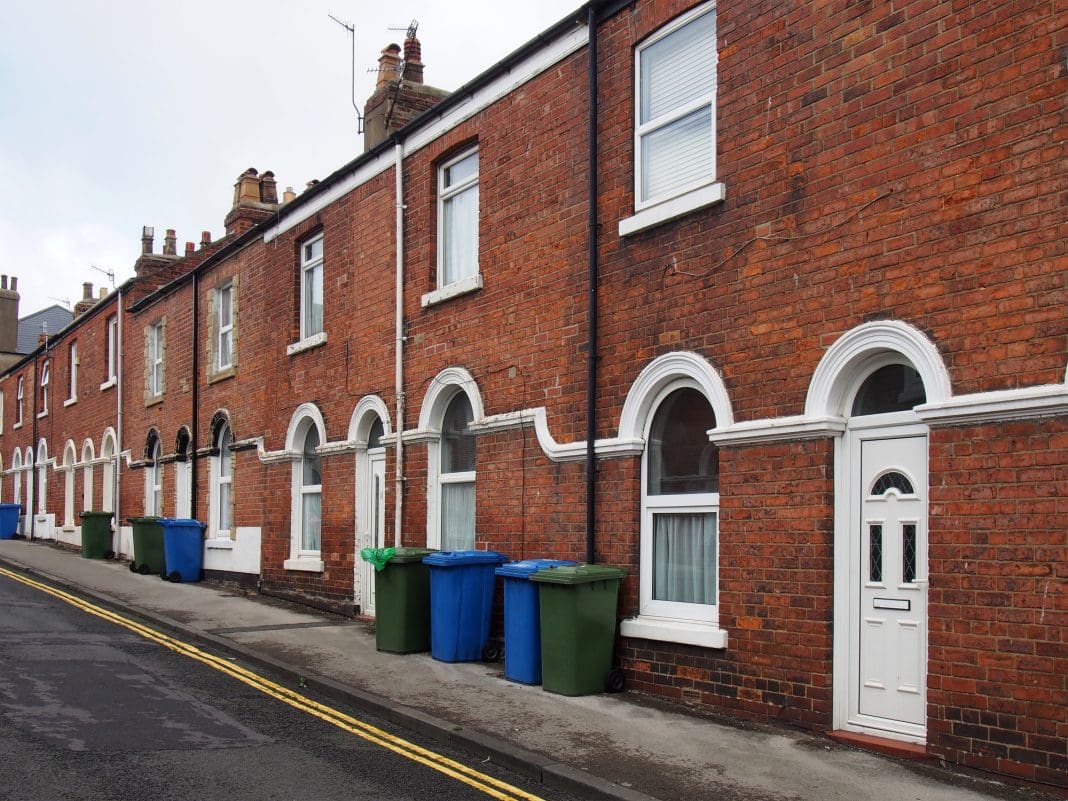Analysis from the PNZ Group on domestic retrofit has uncovered a massive regional divide, with “no progress” made on greening homes in the North East of England
New research from the Powering Net Zero (PNZ) Group has found that a gaping North / South divide is developing in domestic retrofit efforts.
Domestic carbon emissions from the least green homes in the North East, the North West, and Yorkshire and the Humber have remained stubbornly high since 2010.
Homes account for almost a quarter of the UK’s total carbon emissions, and represent the biggest barrier to reaching net zero by 2050 without retrofit intervention.
There are nearly 700,00 high emissions homes in England and Wales
These homes emit over 100kg of carbon dioxide per square metre, annually, compared with the average home’s 40kg and fall into the highest percentiles of domestic emissions, broadly equivalent to EPC ratings of F or G, the two lowest bands for energy efficiency.
In the North East, the North West, and Yorkshire and the Humber, 3.1% of homes in 2023 were recorded as ‘high-emissions homes’. This number shows marginal changes from 3.4% of northern homes in 2010, showing a glacial pace of decarbonising the most carbon intensive houses.
The number of North East homes requiring domestic retrofit is the same as it was in 2010
Of all English and Welsh regions, the North East showed the least progress in domestic retrofit, with no change at all (0pp decrease) in the proportion of these environmentally taxing homes in the last 13 years—from 2.37% of homes in 2010 to 2.37% in 2023.
The PNZ Group’s data reveals the North West and Yorkshire as having made the second- and third-slowest progress on carbon intensive homes, with a less than 0.5% reduction in high-emissions homes since 2010.
Overall, nearly 220,000 high-emissions homes remain in the North of England, which will need to be reduced to 0 to meet the UK’s net zero target.
Southern homes enjoy green investment
In contrast to England’s North, the number of high-emissions homes in the South of England and in Wales is dropping steadily––the result of concerted interventions to make homes greener, through heat pumps, double glazing, or even solar panel installation.
Despite having the highest proportion of emissions-intensive homes of all regions in 2010 at 6.5%, the South West has made the most progress on its domestic emissions, with that proportion dropping to 3.7% in 2023.
A tenth of local authorities are seeing more high-emissions homes
Eden in the North West is the local authority with the most energy-intensive homes in England and Wales – a staggering 16% of homes emitted over 100kg of carbon dioxide per square meter in 2023 compared to the national average of 2.8%.
This is an increase of the number of high-emissions homes on 2010, when 11% of homes were considered energy-intensive.
In fact, over a tenth of local authorities in England and Wales are seeing the number of high-emissions homes climb since 2010. Of the 36 local authorities where high-emissions homes are increasing in number, 25 are located in the North of England.
Simon Turek, co-founder at the PNZ Group, said: “Our data analysis tells the story of a huge regional divide in improving the UK’s housing stock, where Northern England has been left behind. Making UK homes—particularly the most carbon-intensive—more energy efficient is a huge hurdle to reaching net zero emissions by 2050.
“Government retrofitting schemes cover some ground, but the scale of funding needed to green our homes means we need private sector investment too. PNZ Group, as a North West-based business, is uniquely committed to bridge this yawning regional gap, and nearly 40% of our domestic retrofit projects are in the North of England to help deliver warmer, greener homes with urgency.”














